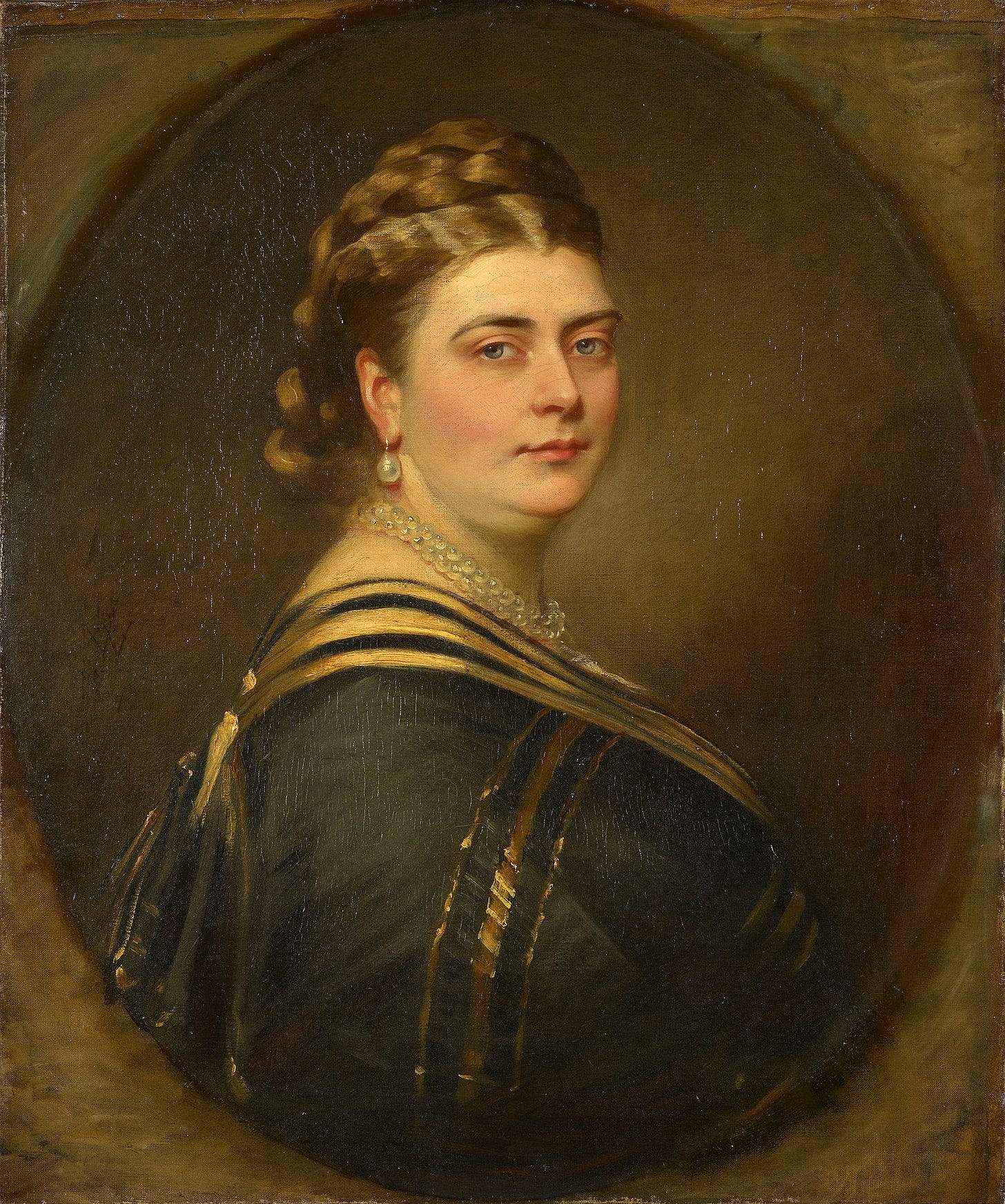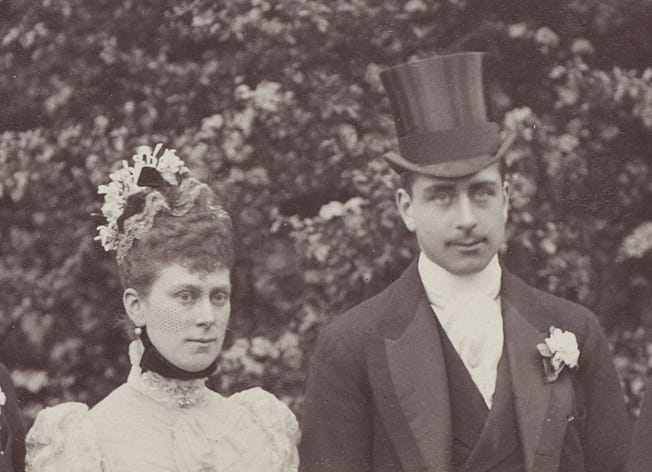The Death of a Duchess and the Fate of the Cambridge Emeralds: The (Un)sealed Will of Francis of Teck (Part 2)
Queen Mary's brother left behind a will that bequeathed precious family jewels to his married mistress–and lobbed painful insults at the royal sister with whom he was once extremely close
Last week, I published the first in a series of articles on a set of newly unsealed British royal wills, focusing on the tragic death of Prince Francis of Teck and the unsettling secrets that were hidden inside his will. Today, the story continues with a flashback to the events that soured the relationship between Queen Mary and her younger brother, and the way that she worked to stem the tide of scandal when he died a few months before her coronation.

In the autumn of 1897, Princess May, the Duchess of York, returned from an official visit to Ireland and headed to White Lodge in Richmond Park for a visit with her parents, the Duke and Duchess of Teck. On the evening of October 25, May had a quiet dinner at home with her mother, Mary Adelaide, while her father, Francis, went out to see a play with her youngest brother, Alexander. Mary Adelaide and May lingered after their meal, sharing a lengthy talk, perhaps going over stories about May’s recent trip to Ireland or the latest news about May’s three young children, three-year-old David, two-year-old Bertie, and baby Mary, who turned six months old that very day.
But Mary Adelaide, who had been suffering from a laundry list of health issues in recent years, wasn’t feeling particularly well. When May woke the next morning, she discovered that her mother was still in bed. Mary Adelaide remained there throughout the day, with May sitting by her bedside. By the evening, the elder Duchess was in a great deal of pain. The cause, it seemed, was the recurrence of an excruciating strangulated hernia. She had undergone surgery for the same condition six months earlier, on the day that May gave birth to baby Mary, and the operation had saved Mary Adelaide’s life. Now, it seemed that the only recourse was to try the challenging surgery–an operation that, at the time, was nearly always fatal– for a second time.
May was terrified. A surgeon, Dr. Allingham, was summoned from London, and by the time he was able to make to White Lodge, it was midnight. It was decided, with Mary Adelaide’s consent, that he should operate immediately. There was really no other choice. May waited downstairs with her father and brother while the doctors worked to save her mother. At first, it seemed like the Duchess may have beaten the odds and survived the dangerous surgery for a remarkable second time. For a time, she was even conscious and speaking. But at three o’clock in the morning, with Francis, May, and Alexander sitting beside her bed, Mary Adelaide died of heart failure. She was 63.
The Duchess of Teck left behind a precarious family in a precarious household. For Princess May, it was the second death she had witnessed in person, after the passing of her first fiancé, the Duke of Clarence, in 1892. She was absolutely distraught, but under the circumstances, she was forced to bear up and shoulder the weight of the next days. Her father, nominally still the head of the family, had descended into an almost incoherent state. Jane Ridley, in her biography of King George V, writes that the Duke “collapsed into a pathetic wreck. He wept bitterly, laughed, talked incoherently and declared himself helpless without his wife.” He refused to believe that his wife was really dead, and the only person able to communicate with him was May.
Reinforcements arrived in the form of the Duke of York, who rushed from a shooting party in Essex in the early morning hours to join his wife at White Lodge, and May’s elder brother, Prince Adolphus, who arrived from Eaton Hall (the country home of his parents-in-law, the Duke and Duchess of Westminster) in Cheshire shortly after noon. Other members of the royal family, including the Prince and Princess of Wales, also headed to London to be close at hand. Queen Victoria, who was a first cousin of the late Duchess, sent a note from Balmoral. The only close member of the family who was missing was May’s second brother, Prince Francis, who was serving as a staff officer under Lord Kitchener in Sudan.
For years, Princess May and Prince Frank had enjoyed a close relationship. The two were alike in many ways. Both shared a passion for fine things and collections–in fact, according to a family friend, Lady Juliet Duff, it was Frank who had introduced May to the hobby of collecting to begin with. Frank was clever, and charming, and lots of fun to be around. One of his sisters-in-law, Princess Alice, recalled that he was “perfectly outrageous.” Ridley notes that Frank wrote May “funny, confiding letters” from his various military postings, but in 1895, their relationship had taken a turn.
Keep reading with a 7-day free trial
Subscribe to Hidden Gems to keep reading this post and get 7 days of free access to the full post archives.





